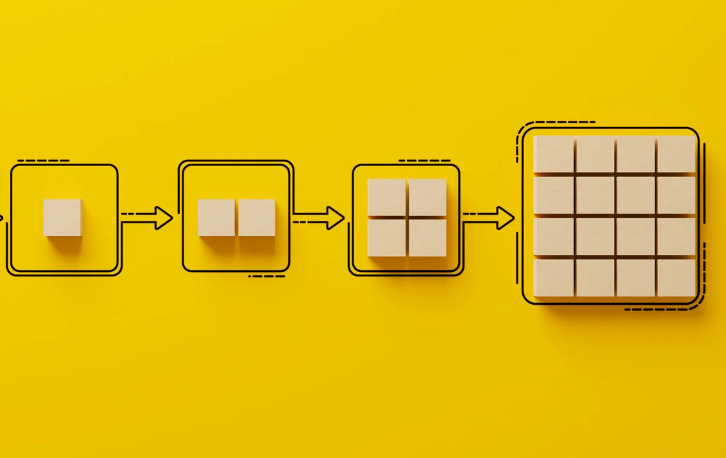Contract disputes: A complete guide
Learn how to handle contract disputes effectively with our comprehensive guide. Explore common causes, resolution strategies, and legal options to protect your interests.
Tired of nonsense pricing of DocuSign?
Start taking digital signatures with BoloSign and save money.
Contract disputes are a common occurrence in the business world, often arising when parties disagree over the terms, interpretation, or performance of a contractual agreement. This comprehensive guide will explore the various aspects of contract disputes, their causes, resolution methods, and preventive measures.
Understanding Contract Disputes
Contract disputes occur when parties to an agreement disagree about their rights and obligations under the contract. These disagreements can stem from various sources, including misinterpretation of contract terms, failure to perform contractual duties, or changes in circumstances that affect the contract's execution.
Types of Contract Disputes

- Breach of Contract: This occurs when one party fails to fulfill their contractual obligations. Breaches can be minor or material, with material breaches often leading to contract termination and potential legal action.
- Interpretation Disputes: These arise when parties have different understandings of contract terms or clauses. Ambiguous language or poorly drafted contracts often lead to such disputes.
- Performance Disputes: These involve disagreements about the quality, timeliness, or completeness of contractual performance.
- Payment Disputes: Common in business transactions, these disputes occur when one party fails to make payments as agreed or disputes the amount owed.
- Termination Disputes: These arise when one party seeks to end the contract prematurely, and the other party contests this action.
Common Causes of Contract Disputes
Understanding the root causes of contract disputes is crucial for prevention and resolution. Some common causes include:

Ambiguous Contract Terms
Vague or imprecise language in contracts can lead to misunderstandings and conflicting interpretations. For example, a contract might state that a project should be completed in a "timely manner" without specifying an exact deadline, leading to disagreements about what constitutes timely completion.
Failure to Perform
When one party fails to meet their contractual obligations, it often results in a dispute. This could involve delivering goods or services late, providing substandard quality, or not delivering at all.
Changes in Circumstances
Unforeseen events or changes in market conditions can make it difficult or impossible for one party to fulfill their contractual obligations. For instance, a supplier might face unexpected production delays due to a natural disaster, leading to a dispute with their buyer over delivery timelines.
Communication Breakdown
Poor communication between parties can lead to misunderstandings about expectations, timelines, or deliverables. Regular, clear communication is essential for smooth contract execution.
Scope Creep
In service contracts, scope creep occurs when the project's scope expands beyond what was initially agreed upon, often without corresponding adjustments to timelines or compensation.
The Impact of Contract Disputes
Contract disputes can have significant consequences for all parties involved:
Financial Costs
Resolving disputes often involves substantial legal fees, court costs, and potential damages or settlements. These costs can quickly escalate, especially in prolonged litigation.
Time and Resource Drain
Disputes can consume significant time and resources that could otherwise be devoted to productive business activities. This opportunity cost can be substantial, particularly for small businesses.
Reputational Damage
Public disputes can harm a company's reputation, potentially affecting future business opportunities and relationships with stakeholders.
Business Relationship Strain
Disputes can damage or destroy valuable business relationships, potentially leading to lost future opportunities and collaborations.
Resolving Contract Disputes
When a contract dispute arises, several resolution methods are available:

Negotiation
Direct negotiation between parties is often the first step in resolving disputes. It's the most cost-effective and least adversarial approach, allowing parties to maintain control over the outcome.
Process: Parties discuss their issues directly, aiming to find a mutually acceptable solution. This may involve compromise from both sides.
Advantages:
- Cost-effective
- Preserves relationships
- Allows for creative solutions
Disadvantages:
- May be ineffective if parties are unwilling to compromise
- No guarantee of resolution
Mediation
Mediation involves a neutral third party (the mediator) who facilitates discussions between the disputing parties to help them reach a mutually acceptable resolution.
Process: The mediator guides discussions, helps identify common ground, and suggests potential solutions, but does not make binding decisions.
Advantages:
- Less formal and adversarial than litigation
- Confidential process
- Can preserve business relationships
Disadvantages:
- Non-binding unless parties agree to a resolution
- May not be effective if one party is uncooperative
Arbitration
Arbitration is a more formal alternative dispute resolution process where an arbitrator or panel of arbitrators hears evidence and arguments from both sides and makes a binding decision.
Process: Similar to a court trial but less formal. Parties present their cases, and the arbitrator(s) make a decision.
Advantages:
- Generally faster and less expensive than litigation
- More flexible than court proceedings
- Decisions is usually binding and enforceable
Disadvantages:
- Limited grounds for appeal
- It can be costly for complex cases
- May lack some procedural safeguards for litigation
Litigation
Litigation involves taking the dispute to court for a judge or jury to decide. It's typically the most formal, expensive, and time-consuming option.
Process: Parties file legal claims, engage in discovery, present evidence and arguments in court, and receive a binding judgment.
Advantages:
- Provides a definitive, enforceable resolution
- Appropriate for complex legal issues
- Public process can set precedents
Disadvantages:
- Expensive and time-consuming
- Adversarial process can damage relationships
- Outcome is uncertain and may not satisfy either party
Case Studies in Contract Disputes
Examining real-world cases can provide valuable insights into the nature and resolution of contract disputes.
Case Study 1: Construction Contract Dispute

Background: A construction company entered into a contract with a property developer to build a commercial complex. The contract specified a completion date and penalties for delays.
Dispute: The construction company faced unexpected delays due to material shortages and labor issues. They sought a time extension, which the developer refused, insisting on enforcing delay penalties.
Resolution: The parties engaged in mediation. The mediator helped them reach a compromise where the completion date was extended by two months, with reduced penalties for any further delays.
Lessons Learned:
- The importance of including force majeure clauses in contracts
- The value of flexibility and compromise in dispute resolution
- The effectiveness of mediation in preserving business relationships
Case Study 2: Software Development Contract Dispute
Background: A software company contracted to develop a custom application for a client. The contract included specific functionality requirements and a delivery timeline.
Dispute: Upon delivery, the client claimed the software didn't meet all specified requirements and refused full payment. The software company argued they had fulfilled the contract terms.
Resolution: The dispute went to arbitration. The arbitrator found that while most requirements were met, some minor features were missing. The decision required the software company to complete the missing features and the client to pay 90% of the outstanding amount.
Lessons Learned:
- The importance of clear, detailed specifications in technology contracts
- The value of regular progress checks and communication during project development
- The effectiveness of arbitration in resolving technical disputes
Preventing Contract Disputes
Proactive measures can significantly reduce the likelihood of contract disputes:
Clear and Comprehensive Contract Drafting
Invest time and resources in drafting clear, unambiguous contracts. Key elements include:
- Clearly defined terms and conditions
- Specific performance criteria and deadlines
- Detailed payment terms and schedules
- Procedures for handling changes or unforeseen circumstances
- Clear dispute resolution clauses
Due Diligence
Thoroughly research and vet potential contract partners. Understanding their reputation, financial stability, and past performance can help avoid future disputes.
Effective Communication
Maintain open, regular communication throughout the contract period. This includes:
- Regular progress meetings
- Written documentation of all significant discussions and decisions
- Prompt addressing of any concerns or issues
Change Management Procedures
Implement formal procedures for handling changes to the contract scope, timeline, or terms. This helps prevent misunderstandings and scope creep.
Performance Monitoring
Regularly monitor and document contract performance. This can help identify potential issues early and provide evidence if a dispute arises.
Risk Assessment and Mitigation
Identify potential risks in the contract and develop strategies to mitigate them. This might include:
- Insurance coverage
- Performance bonds
- Contingency plans for potential disruptions
Legal Considerations in Contract Disputes
When facing a contract dispute, several legal considerations come into play:

Statute of Limitations
Be aware of the time limits for bringing legal action. These vary depending on the type of contract and jurisdiction.
Choice of Law and Jurisdiction
Many contracts specify which state's laws will govern the agreement and where any legal proceedings must take place. This can significantly impact the dispute resolution process.
Evidence Preservation
Maintain thorough records of all contract-related communications, performance data, and relevant documents. These can be crucial if legal action becomes necessary.
Legal Representation
Consider engaging legal counsel early in the dispute process. An experienced contract lawyer can provide valuable guidance on your rights, obligations, and strategic options.
The Role of Technology in Contract Management and Dispute Prevention
Modern technology offers tools to improve contract management and reduce the risk of disputes:

Contract Management Software
These platforms can help organize, track, and manage contracts throughout their lifecycle, ensuring key dates and obligations are not missed.
E-signature Solutions
Electronic signature tools can streamline the contract signing process and provide a clear audit trail of agreement.
Blockchain Technology
Emerging blockchain solutions offer the potential for creating "smart contracts" that can automatically execute certain terms, potentially reducing disputes over performance.
Frequently Asked Questions
Based on the search results, here are some frequently asked questions about contract disputes:
1) What is a contract dispute?
A contract dispute occurs when parties disagree about the terms, interpretation, or execution of a legally binding contract. This can arise due to breaches, miscommunication, or differing interpretations of the contract's clauses.
2) What are common types of contract disputes?
Common types include:
- Breach of contract
- Interpretation disagreements
- Performance disputes
- Payment issues
- Termination disputes
3) How can contract disputes be avoided?
Some tips to avoid disputes:
- Clearly define contract terms
- Use plain language to avoid ambiguity
- Document all negotiations in writing
- Include dispute resolution clauses
- Regularly monitor contract compliance
4) What are the main ways to resolve contract disputes?
Common resolution methods include:
- Negotiation between parties
- Mediation with a neutral third party
- Arbitration
- Litigation in court
5) What remedies are available for contract breaches?
Potential remedies include:
- Damages (compensatory, punitive, nominal, liquidated)
- Specific performance
- Cancellation and restitution
6) What should you do when a contract dispute arises?
Key first steps include:
- Review the full contract
- Check for dispute resolution clauses
- Gather all relevant documents and communications
- Consider legal advice early on
Conclusion
Contract disputes are a complex but manageable aspect of business operations. By understanding the causes, resolution methods, and preventive measures, businesses can navigate these challenges more effectively. Clear communication, thorough contract drafting, and proactive management are key to minimizing disputes. When disputes do arise, a range of resolution options from negotiation to litigation are available. By approaching contract disputes with knowledge and strategy, businesses can protect their interests while maintaining valuable relationships and focusing on their core operations.


Paresh Deshmukh
Co-Founder, BoloForms
28 Apr, 2025
Take a Look at Our Featured Articles
These articles will guide you on how to simplify office work, boost your efficiency, and concentrate on expanding your business.


